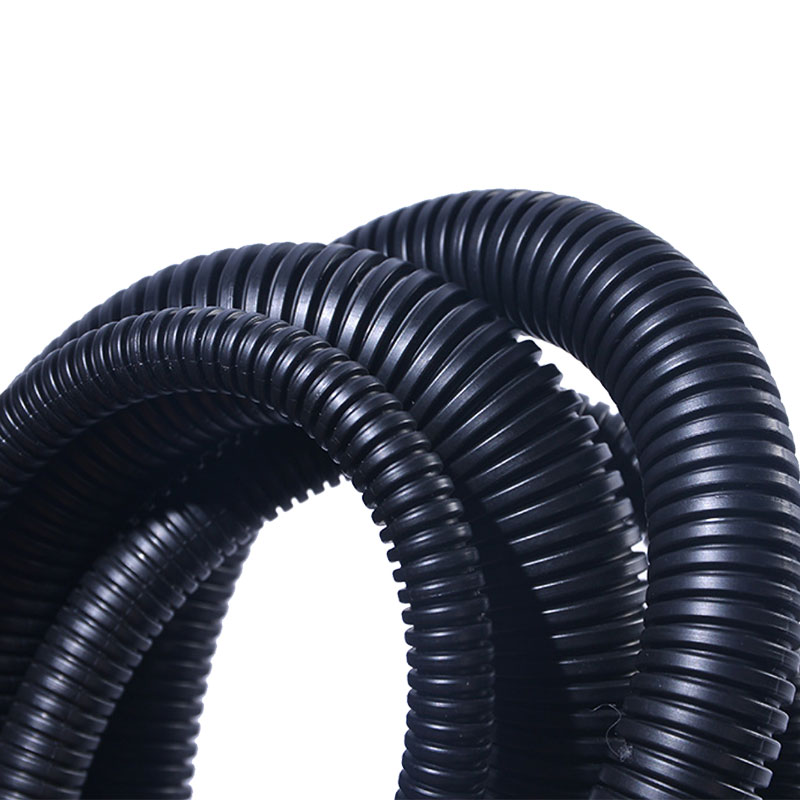In modern urban construction, pipeline systems are an indispensable component. Among these, corrugated pipes, with their unique structure and advantages, are widely used across various scenarios. Today, we delve into the details of PVC and HDPE corrugated pipes.
PVC Corrugated Pipes
PVC, short for Polyvinyl Chloride, is a common plastic material. PVC corrugated pipes are made primarily from polyvinyl chloride, exhibiting excellent corrosion resistance, abrasion resistance, and impact resistance, making them widely used in numerous applications. The sizes of PVC corrugated pipes are diverse, allowing for selection based on actual needs. For instance, 24-inch corrugated pipes and 24-inch corrugated drain pipes are two common sizes. Additionally, PVC corrugated hoses are popular products, their flexibility making them more convenient in situations requiring bending.

HDPE Corrugated Pipes
HDPE stands for High-Density Polyethylene, a polymer. HDPE corrugated pipes are made from high-density polyethylene, offering higher strength and better resistance to environmental stress cracking than PVC corrugated pipes, making them more suitable in certain environments, such as areas prone to earthquakes.
The fittings for HDPE corrugated pipes are also varied, including double wall corrugated pipes or double corrugated pipes. These fittings can be selected based on specific project requirements to meet different engineering needs.

Applications of PVC and HDPE Corrugated Pipes
Both PVC and HDPE corrugated pipes have their unique application domains. For example, PVC corrugated drain pipes are extensively used in urban drainage systems, where their good corrosion and abrasion resistance ensure durability over long-term use. HDPE corrugated pipes, on the other hand, are widely utilized in projects requiring high strength and excellent resistance to environmental stress cracking.
Comparison of bellows
While both PVC and HDPE pipes are types of corrugated pipes, they differ significantly in material, performance, and application. PVC corrugated pipes are made from polyvinyl chloride, whereas HDPE corrugated pipes are made from high-density polyethylene. These material differences directly affect the pipes’ performance.
In terms of performance, PVC corrugated pipes offer good corrosion resistance, abrasion resistance, and impact resistance. HDPE corrugated pipes, however, have higher strength and better environmental stress cracking resistance. This means that different pipe types may be needed for different application scenarios.
In application, PVC and HDPE corrugated pipes each have their specific application areas. For instance, PVC corrugated drainage pipes are commonly used in city drainage systems, while HDPE double-wall corrugated pipes are often used in chemical, electrical, and other fields.

In summary, PVC and HDPE corrugated pipes each have their advantages, and the choice between them should be based on specific needs and environmental conditions. Regardless of the choice, ensuring the quality of the pipes is crucial for the stable operation of the pipeline system.
In pipeline systems, both PVC and HDPE corrugated pipes play vital roles. Understanding the characteristics and applications of these pipes enables us to better select the appropriate products to meet our engineering needs. Additionally, attention to the quality and maintenance of the pipes is essential to ensure the stable operation of the pipeline system, providing a solid foundation for urban construction.
 Zhongtong HDPE PIPE System Professional Supplier
Zhongtong HDPE PIPE System Professional Supplier